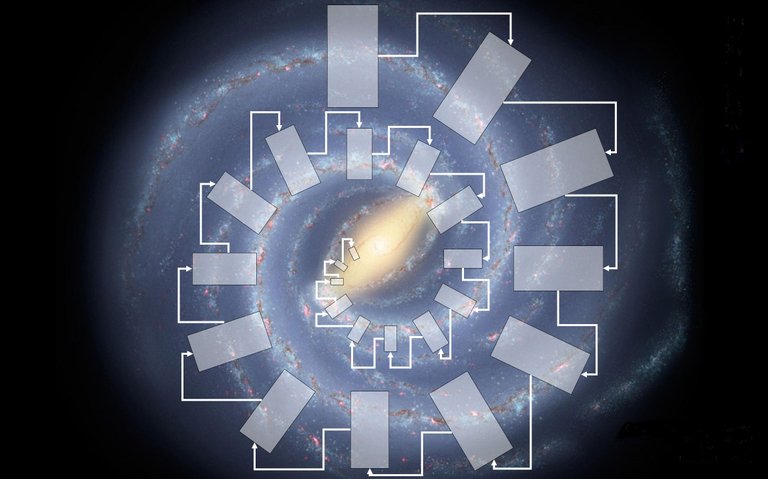I recently finished the Foundation series by Isaac Asimov, one of the most popular and influential science fiction series ever, and I found myself getting pulled into it for many of the same reasons I have become so interested in cryptocurrencies and decentralized blockchain projects. The trading, the “moon” and the “lambos” are all great, but what keeps me hooked on crypto is the developing field of cryptoeconomics, a technology-enabled mix of philosophy, sociology, psychology and economics; I will leave it to Vitalik to explain it in more detail.
“Using cryptography to prove properties about messages that happened in the past and economic incentives defined inside the system to encourage desired properties to hold into the future.” (Paraphrased from Vitalik Buterin’s presentation on cryptoeconomics)
The Foundation series is set over 20,000 years in the future. Humans have populated the entire galaxy and a central empire rules over millions of planets and quadrillions of people. I will do my best to avoid any spoilers below, but the central character throughout the series (I read the series in the published order) is Hari Seldon, who creates psychohistory, a mathematical discipline intended to provide general high level predictions of the future. In doing so he is able to foresee the downfall of the empire and the millennia of anarchy until another empire can come to power and stabilize the galaxy. He then uses his new discipline to put a plan in place to reduce the time it will take for society to rebuild.
"Psychohistory depends on the idea that, while one cannot foresee the actions of a particular individual, the laws of statistics as applied to large groups of people could predict the general flow of future events. Asimov used the analogy of a gas: an observer has great difficulty in predicting the motion of a single molecule in a gas, but can predict the mass action of the gas to a high level of accuracy. (Physicists know this as the Kinetic theory)." Wikipedia
The most important components of psychohistory are that it only works over long time frames (hundreds or thousands of years) and with large populations (think hundreds of millions of planets full of people). It is repeatedly stated throughout the series that psychohistory cannot be applied to specific areas or people and that extraordinary circumstances can affect its predictive ability. Successful decentralized systems rely on adoption and network effects, so most will only be effective at scale. What the blockchain introduces is the ability to have a true time component in a technical system. An immutable public ledger removes the reliance on inconsistent time tracking on disparate servers and replaces it with a reliable order of events. Due to the nature of the technology, all blockchain projects inherently need to evaluate the actions of the various participants over long timeframes or across large amounts of data. Whether that is really planning for a future of mass adoption or just a system with short block times, the blockchain is intended to be an efficient store of large amounts of information, so while you may not be thinking thousands of years in the future you always need to be thinking thousands of blocks ahead.
Psychohistory was also by no means a complete science when Hari Seldon was done with it. It was constantly being evaluated and adjusted, and when something threatened to derail the plan, the participants in the network needed to be nudged to get back on track. Based on the second axiom, there needed to be as little interference as possible. There's a strong corollary to the “foundation” (oddly appropriate naming) model employed by many decentralized projects - the Ethereum Foundation, Factom Foundation, etc. A system is built to a high-level specification with a stated purpose and then released to the world. At that point it is up to the various network participants to interact with it how they wish. Anyone can build applications or services on it, copy it and make some changes, or really do anything they feel will provide some utility. The foundations in this model provide suggestions for upgrades, implement changes, operate as the main source for applications being built, or simply act in an advisory capacity. Either way they maintain some level of passive control, slowly and carefully nudging things in a direction they think will be better for the whole. Since it is decentralized the changes only go into place if the network participants adopt them, so focusing on the natural inclinations of those participants is critical to making sure proposed improvements are accepted and implemented.
When evaluating decentralized projects, I always find myself focusing on the incentives of the network participants. What are the miners, developers, node operators, application developers, foundation members, end users etc. putting in and getting out of the solution? Does the design of the system lend itself to obvious use cases? Are the incentive models aligned with natural human action? Whether its speculating on the future value of a token or just projecting the success of a project, we are all trying to predict the future. A traditional, centralized company or service provider also focuses on how their offering will naturally be adopted at scale. The central control allows for continued adjustment and control of the message to the user/consumer. When releasing a decentralized, blockchain-enabled solution, a level of control is being given up by the creators to the network participants. There are still a few levers to pull and significant influence to provide, but if the initial system is not aligned with natural human motivations then it is destined to fail.


Intriguing view. I like it. Can we be forewarned... I think we can, the speed of Ethereum to # blocks will sink it... when this is fully 'groked' (to use another science fiction verb) the ICO market will CRASH.